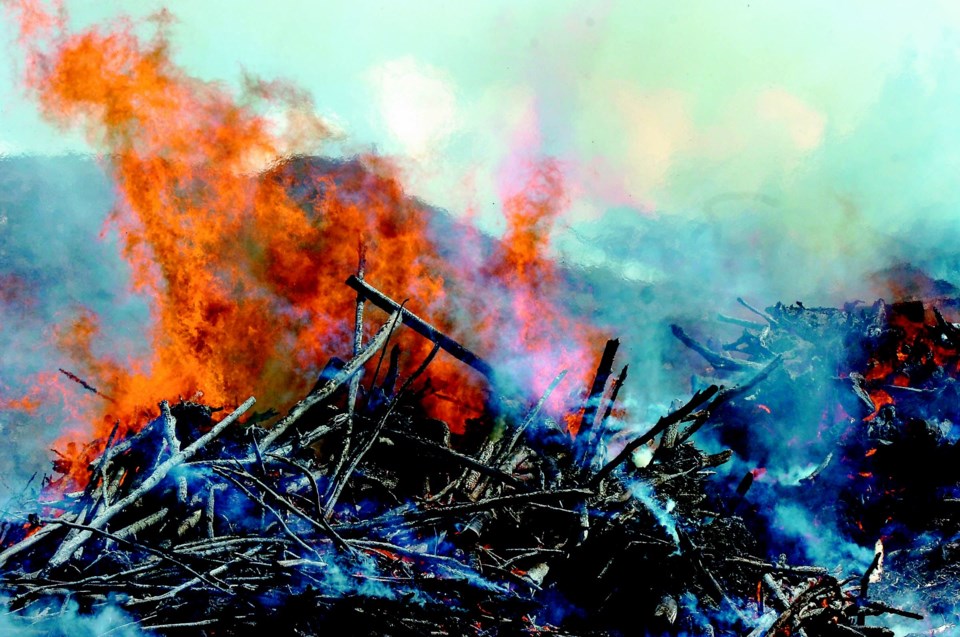The smoke from the slash burning that descended on the city last weekend may not have significantly increased the 24-hour average for particulate but a University of Northern British Columbia professor says it did create a noticeable spike.
Starting at about 9 p.m. on Friday, the level of fine particulate began to climb and by 3 a.m.Saturday, it had peaked at 140 micrograms per cubic metre at the Plaza 400 monitoring station, according to environmental sciences professor Peter Jackson.
By 5 a.m. it had dropped back down to background levels, but had been high enough to send Prince George Fire Rescue out to search for the source, which led them to a half-dozen slash piles being burned on the Takla Forest Service Road.
Levels above 25 micrograms can constitute a hazard for those with breathing problems and some other types of ailments.
On Tuesday, a Ministry of Environment official said the burning produced a slight elevation in 24-hour average and appeared to be in compliance with the province's open burning smoke control regulation.
Jackson said it would have been almost impossible to issue a warning for the spike.
"It's a combination of having that smoldering source there and the winds in just the right direction to bring the smoke over the city," Jackson said. "It's kind of a perfect storm of event."
Matters are complicated by the fact that it usually takes more than a day to burn a pile.
"You can get reasonable mixing during the day, where the smoke gets diluted and the concentrations aren't too high," Jackson said.
"And then at night, when the ground cools off and an inversion sets in, the atmosphere stabilizes and the smoke hangs near the ground and the concentrations stay up."
Jackson said he could not say for sure but suspects the smoke drifted into the city via the Nechako River.
"As the sun sets the ground cools off on the bottom and that stabilizes the atmosphere so there is less vertical mixing," Jackson said. "And the air drains down hills and fills up the valleys, so I think what probably happened is the down-slope flow under these calm conditions carried the smoke that was now hugging the ground probably along the Nechako River."
There was also the possibility the piles were too wet, but Jackson said he could not say for sure.
From an air quality perspective, burning in the middle of the summer is better but is out of the question because of the risk of sparking a forest fire, Jackson said.
An air quality advisory was issued Wednesday morning based due to high levels of dust in the city. Jackson noted the level of coarse particulate spiked at 163 micrograms at 10 p.m. on Tuesday for the same reason. Levels above 50 micrograms for that type of particulate are considered unsafe.



